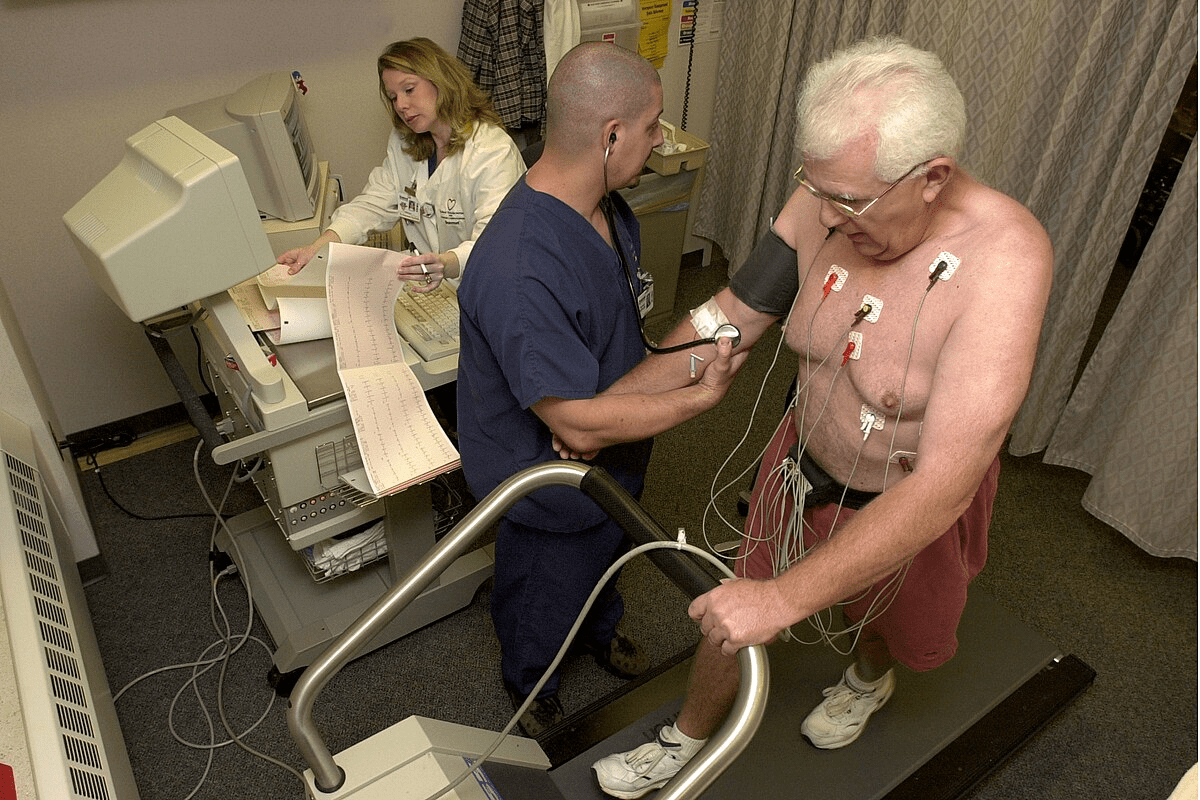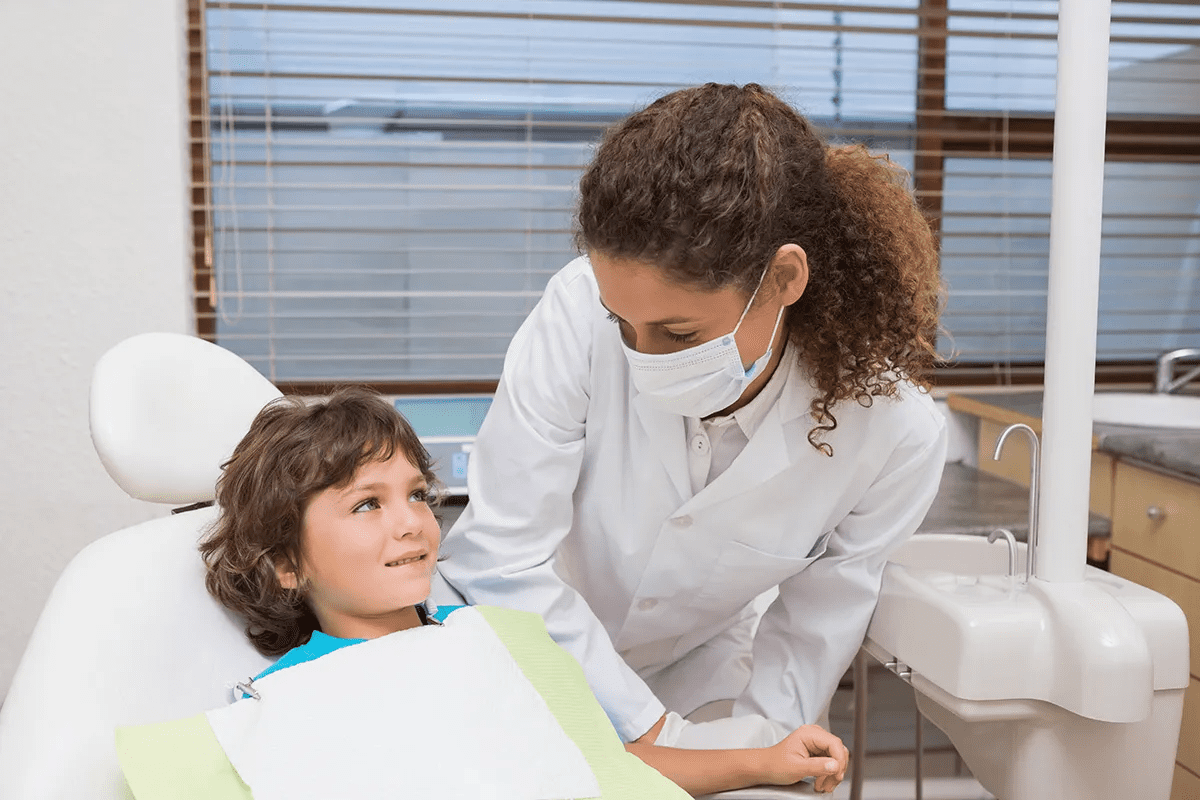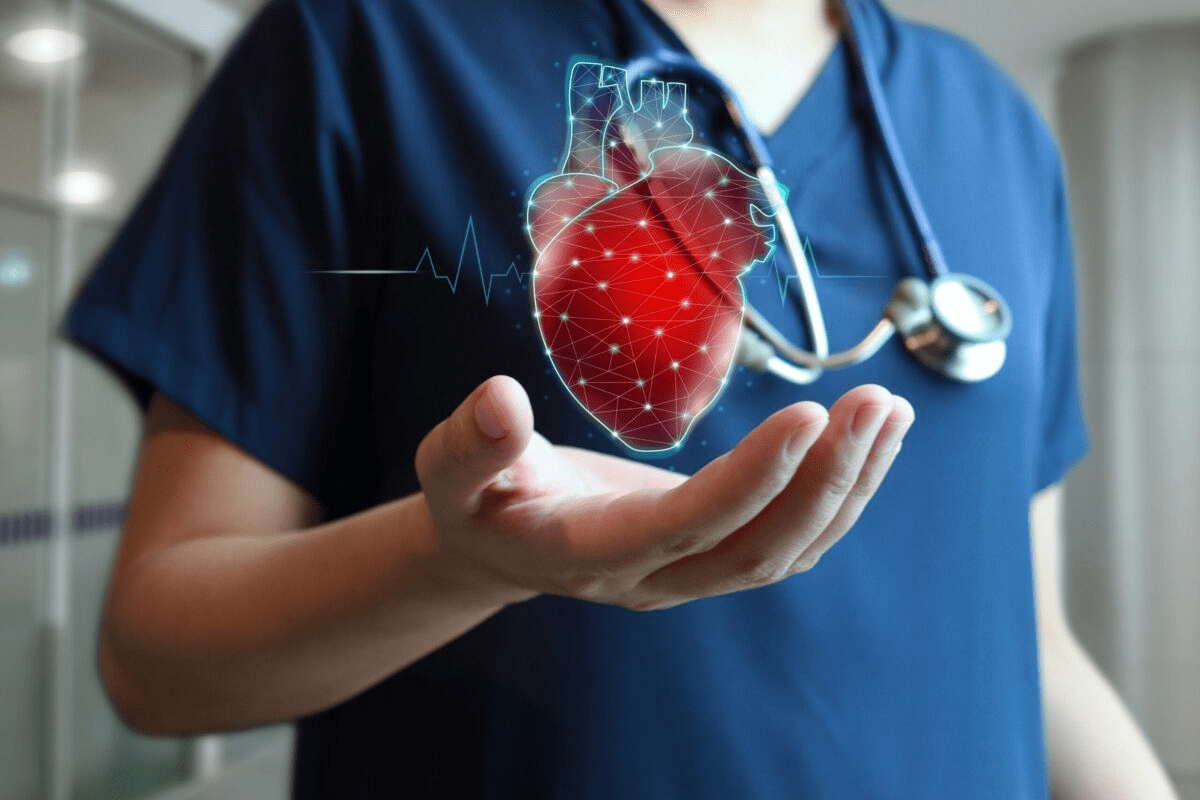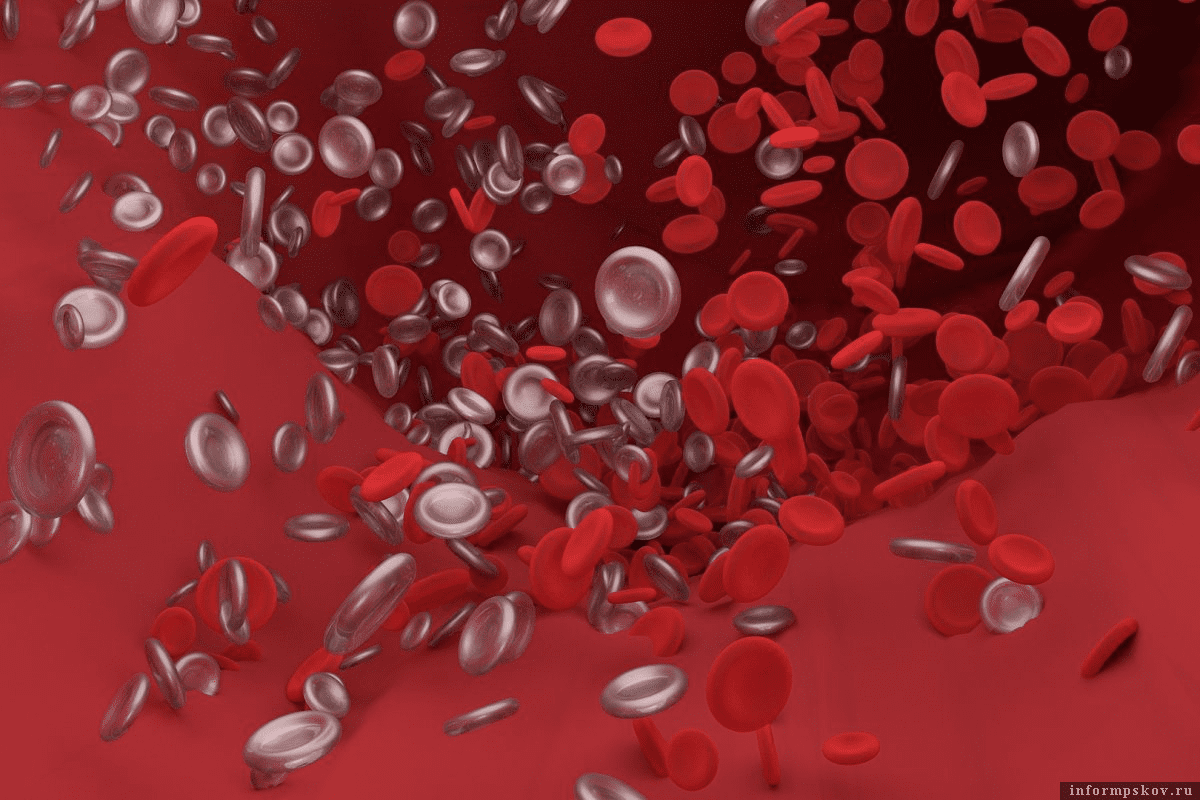Last Updated on November 26, 2025 by Bilal Hasdemir
Chemotherapy is a common treatment, and many wonder, “how scary is chemotherapy? While side effects can be tough, support and care help make it manageable.
A breast cancer survivor shares her chemotherapy experience and discusses alternative treatment options to highlight the risks and realities. She stresses the need to know the risks and realities of chemo drugs.
Chemotherapy can cause many side effects. These range from hair loss and fatigue to serious issues like permanent heart damage and nerve damage.
Key Takeaways
- Chemotherapy is a common cancer treatment with possible side effects.
- 84% of breast cancer patients report experiencing at least one side effect.
- Side effects can range from mild to severe and long-lasting.
- Understanding the risks and realities is key for patients.
- Chemotherapy can lead to serious complications in rare cases.
What is Chemotherapy and How Does it Work?

Chemotherapy is a treatment that uses drugs to kill cancer cells all over the body. It’s a key part of oncology treatment. This method targets cells that grow fast, which is typical for most cancer cells.
The Science Behind Cancer Treatment
Chemotherapy uses drugs that disrupt the life cycle of cancer cells. These drugs can be given in different ways, like IV chemotherapy or pills. The method chosen depends on the cancer type, its stage, and the patient’s health.
How Chemotherapy Targets Cancer Cells
Chemotherapy aims at cells that divide quickly, mainly cancer cells. It can be used alone or with other treatments like surgery or radiation. Sometimes, infusion therapy is used to put chemotherapy drugs straight into the blood.
It’s important for patients to understand how chemotherapy works. Knowing how the drugs target cancer cells helps them grasp their role in the oncology treatment plan.
The History and Evolution of Chemotherapy
The history of chemotherapy is a story of ongoing innovation in the fight against cancer. It started in the early 20th century, beginning a new era in cancer treatment.
Early Development of Chemotherapy Drugs
The early days of chemotherapy drugs began with mustard gas from World War I. It caused bone marrow suppression and lymphoid depletion. This led to the study of nitrogen mustard as a cancer treatment, starting in the 1940s.
Modern Advancements in Oncology Treatment
Today, chemotherapy has made big strides, thanks to better understanding of cancer biology and targeted therapies. Now, chemotherapy comes in various forms, including combination regimens. These improve its effectiveness against different cancers. New chemo drugs have also raised patient survival rates.
Chemotherapy is always evolving, with research into better and less toxic treatments. This progress is key in the fight against cancer, bringing hope to patients everywhere.
Common Types of Chemotherapy Drugs
Chemotherapy has many drugs, each targeting cancer cells in unique ways. It’s key for patients and to know about these types. This helps them understand cancer treatment better.
Alkylating Agents and Antimetabolites
Alkylating agents damage cancer cells’ DNA, stopping them from growing. Examples are cyclophosphamide and chlorambucil. Antimetabolites, like 5-fluorouracil and gemcitabine, block DNA and RNA production. These are used against leukemia and lymphoma.
Plant Alkaloids and Antitumor Antibiotics
Plant alkaloids, from plants, stop cells from dividing. Vincristine and vinblastine are used for lymphomas and solid tumors. Antitumor antibiotics, like doxorubicin, stop cancer cells from growing. They work well against many cancers.
Targeted Therapy Agents
Targeted therapy agents are new. They aim at cancer cells’ specific traits, harming normal cells less. Trastuzumab treats HER2-positive breast cancer, and imatinib fights certain leukemias. These drugs are a big step forward, being more precise and less toxic.
pick chemotherapy drugs based on the cancer type, stage, and patient’s health. Knowing about these categories helps patients deal with treatment better.
How Chemotherapy is Administered
Chemotherapy can be given in different ways, each with its own benefits and things to consider. The choice depends on the cancer type, its stage, and the patient’s health.
Intravenous (IV) Chemotherapy Process
IV chemotherapy is a common method. It involves putting chemotherapy drugs directly into a vein. This way, high doses can be given quickly. IV chemotherapy is often given in a setting. Here, patients get infusion therapy for hours.
Oral Chemotherapy Options
Oral chemotherapy means taking pills or liquids. It’s easier for some patients because it can be done at home. But, it’s important to follow the treatment plan closely.
Other Administration Methods
There are other ways too. Topical chemotherapy applies drugs to the skin. Intra-arterial chemotherapy sends drugs to the tumor’s artery. The Typical Chemotherapy Treatment Schedule
Knowing the typical chemotherapy treatment schedule is key for patients. It helps them get ready for what’s coming. Treatment plans are made just for each person. They consider the cancer type and stage, and the patient’s health and past medical history.
Cycles and Sessions Explained
Chemotherapy is given in cycles. Each cycle has a treatment time and a recovery time. Cycles usually last from 2 to 4 weeks.
Patients might get chemotherapy once a week, every two weeks, or every three weeks. This depends on their treatment plan.
Duration of Treatment Plans
How long chemotherapy treatment lasts can vary a lot. It can be a few months or even years. The number of cycles and how often treatment is given depends on how well the patient responds and any side effects.
- Factors influencing treatment duration:
- Type and stage of cancer
- Patient’s overall health and medical history
- Response to treatment
- Presence and severity of side effects
Understanding the typical chemotherapy treatment schedule helps patients prepare. It lets them make informed choices about their care.
Common Physical Side Effects of Chemotherapy
It’s important for patients to know about the physical side effects of chemotherapy. This treatment can harm not just cancer cells but also healthy ones. This leads to various side effects.
Hair Loss and Skin Changes
Hair loss, or alopecia, is a well-known side effect of chemotherapy. This happens because the treatment targets cells that grow fast, including hair follicles. Skin changes are also common, with some patients experiencing dryness, rashes, or increased sensitivity.
To manage hair loss, patients can use scalp cooling devices. These devices can help reduce hair loss in some cases. For skin changes, gentle skin care products and avoiding harsh chemicals can help.
Nausea, Vomiting, and Digestive Issues
Nausea and vomiting are among the most feared side effects of chemotherapy. These symptoms can be managed with anti-nausea medications, dietary changes, and alternative therapies like acupuncture.
Digestive issues, including diarrhea or constipation, can also occur. A balanced diet, staying hydrated, and using medications as prescribed can help manage these symptoms.
Fatigue and Weakness
Fatigue is a common side effect of chemotherapy, affecting patients’ quality of life. This persistent feeling of tiredness or weakness can be due to the treatment itself, anemia, or other factors.
| Side Effect | Management Tips |
| Hair Loss | Use scalp cooling devices, consider wigs or headscarves |
| Nausea and Vomiting | Take anti-nausea medication, eat small frequent meals |
| Fatigue | Rest when needed, maintain a balanced diet, stay hydrated |
By understanding these common physical side effects, patients can better prepare themselves for the challenges of chemotherapy. They can work with their healthcare team to manage these effects effectively.
Emotional and Psychological Impact of Chemotherapy
Chemotherapy is not just a physical challenge. It also tests a person’s emotions and mind. Patients often feel a mix of fear, anxiety, depression, and frustration.
Anxiety and Depression During Treatment
Chemotherapy can cause a lot of emotional pain. This can show up as anxiety or depression. The unknowns of treatment and the physical discomfort can feel too much. It’s key for patients to recognize these feelings and look for help.
| Emotional Challenges | Coping Strategies |
| Anxiety | Meditation, Support Groups |
| Depression | Counseling, Family Support |
Coping with Body Image Changes
Chemotherapy can cause hair loss, affecting how patients see themselves. or a man undergoing chemo faces a tough reminder of their treatment. Yet, many find ways to deal with these changes through support groups and counseling.
Knowing these changes are temporary and part of healing can help patients get through this tough time.
Can Chemo Kill a Person? Understanding the Serious Risks
Many people wonder if chemotherapy can be deadly. This is a big worry for those fighting cancer. Chemotherapy is meant to kill cancer cells but can also cause serious side effects.
Mortality Rates Associated with Chemotherapy
Chemotherapy can be risky, leading to death in some cases. This is more likely for those with health problems or getting high doses. Research shows that some treatments can increase death rates by 1-5%.
High-Risk Patient Populations
Some groups face higher risks with chemotherapy. This includes older adults, people with weak immune systems, and those with heart disease or other serious health issues.
Balancing Treatment Benefits Against Risks
must weigh chemotherapy’s benefits against its risks for each patient. They consider the patient’s health, cancer type and stage, and other treatment options.
Knowing the dangers of chemotherapy helps patients and make better choices. This way, they can find the best treatment plan.
Long-Term and Late Effects of Chemotherapy
It’s important for patients and to know about chemotherapy’s long-term effects. This treatment is key for many cancers but can deeply affect the body.
Organ Damage Considerations
Chemotherapy can harm vital organs like the heart, lungs, and kidneys. Some drugs can damage the heart, leading to failure. It’s vital to watch for and manage these risks during and after treatment.
| Organ | Potential Damage | Management Strategies |
| Heart | Cardiotoxicity, Heart Failure | Regular cardiac check-ups, Medication |
| Lungs | Pulmonary Fibrosis | Monitoring lung function, Avoiding smoking |
| Kidneys | Nephrotoxicity | Hydration, Regular kidney function tests |
Secondary Cancer Risks
Chemotherapy can also increase the risk of getting secondary cancers. This is because it can damage healthy cells’ DNA. The risk depends on the type of chemotherapy, how much is used, and the patient’s health.
“The development of secondary cancers is a well-recognized risk associated with certain chemotherapy agents.”
Cognitive Effects (“Chemo Brain”)
Many people experience cognitive changes after chemotherapy, known as “chemo brain.” These can include memory issues, trouble focusing, and feeling confused. It’s thought that chemotherapy drugs can harm brain function.
Knowing about these long-term and late effects is key to better patient care and improving life after chemotherapy.
Managing Chemotherapy Side Effects
Chemotherapy side effects can be tough, but there are ways to handle them. The main goal is to reduce discomfort. This way, patients can keep up with their treatment without big breaks.
Medications to Reduce Side Effects
Many drugs can ease common side effects of chemotherapy. Antiemetic drugs stop nausea and vomiting, which are very hard to deal with. Ondansetron is often given for this. Also, filgrastim helps increase white blood cells, lowering infection risk.
Lifestyle Adjustments During Treatment
Changing your lifestyle can also help manage side effects. Eating a healthy diet is key. Patients are told to eat small meals often to fight nausea and get enough nutrients. Drinking plenty of water is also important, but always check with your first.
Resting and relaxing are very important during treatment. It’s best to save energy and focus on easy tasks. Gentle exercises like walking or yoga can help fight fatigue and boost mood.
Complementary Therapies
Complementary therapies offer extra support for side effects. Meditation and acupuncture can help lower stress and ease some side effects. Some find comfort in massage therapy or aromatherapy, which can lift their mood and reduce anxiety.
By using medicines, making lifestyle changes, and trying complementary therapies, patients can manage chemotherapy side effects better. This improves their treatment experience overall.
Special Considerations for Different Patient Groups
Chemotherapy isn’t the same for everyone. Children, elderly patients, and pregnant women need special care. Their unique needs call for a tailored approach to cancer treatment.
Child Cancer Patients and Chemotherapy
Children getting chemotherapy need careful attention. Their bodies are growing, so the treatment must be adjusted. Family and healthcare teams are key in managing the treatment’s effects.
Elderly Patients Undergoing Chemo
Elderly patients face extra challenges with chemotherapy. They might have other health issues and less strength. It’s important to assess their health and adjust the treatment to avoid side effects.
Pregnant Women and Fertility Concerns
Pregnant women with cancer have to weigh treatment risks against cancer treatment. Special care teams help find the safest options. Also, talking about fertility is important for those who can have children.
Healthcare providers must understand these special needs. This way, they can give personalized care. It improves treatment results and quality of life for all patients.
The Role of Support Systems During Chemotherapy
Support systems are key during chemotherapy, helping with emotional, physical, and financial needs. Chemotherapy is a tough treatment for many cancers. It affects not just the body but also the mind and emotions.
Family and Caregiver Support
Family and caregivers are usually the first line of support for those getting chemotherapy. They help with medication, go to treatment sessions, and offer emotional support. A strong support system can greatly improve a patient’s life and treatment results.
Caregivers also get help from support groups. There, they can share their experiences and learn how to care for their loved ones.
Professional Support Resources
Professional support is also essential for chemotherapy patients. Oncology social workers, nurses, and other healthcare professionals offer valuable advice, emotional support, and help with treatment details. Support groups, online or in-person, let patients connect with others facing similar challenges.
With both family and professional support, patients can handle chemotherapy better. This improves their overall treatment experience.
Alternative and Complementary Approaches to Cancer Treatment
Along with traditional treatments, new ways to fight cancer are being looked into. It’s important for patients to know about these options.
Evidence-Based Complementary Therapies
Complementary therapies work with traditional treatments to ease symptoms and improve life quality. Evidence-based therapies like acupuncture help with pain and nausea. Mindfulness practices, such as meditation and yoga, lower stress and anxiety.
Art therapy and music therapy offer emotional support and boost well-being. They’re meant to enhance traditional treatments, not replace them.
When Alternative Treatments May Be Considered
Alternative treatments are used instead of traditional ones. They might not have as much evidence as traditional therapies. It’s key for patients to talk to their about these options.
Be careful of treatments that promise to cure cancer quickly. Reliable information and advice from are vital for making smart choices about alternative treatments.
Recent Innovations in Chemotherapy
The field of oncology has seen big changes in chemotherapy. These changes are making treatments more effective and targeted. This is bringing new hope to patients and .
Targeted Therapies and Precision Medicine
Targeted therapies focus on specific parts of cancer cells. Precision medicine goes further by tailoring treatments to each patient’s cancer. This approach is showing great promise in better treatment results and fewer side effects.
Immunotherapy Combinations
Immunotherapy uses the body’s immune system to fight cancer. Mixing it with traditional chemotherapy is showing great promise. Checkpoint inhibitors are being used with chemotherapy to treat different cancers.
Reduced Toxicity Formulations
There’s a push to make chemotherapy less toxic. New formulations aim to reduce side effects without losing effectiveness. Nanoparticle-based drug delivery systems are helping target cancer cells better and protect healthy tissues.
| Innovation | Description | Benefits |
| Targeted Therapies | Focus on specific molecular targets in cancer cells | Improved efficacy, reduced side effects |
| Precision Medicine | Tailored treatment based on individual cancer characteristics | Personalized care, enhanced outcomes |
| Immunotherapy Combinations | Combining immunotherapy with chemotherapy | Increased treatment efficacy, potentially better survival rates |
| Reduced Toxicity Formulations | New formulations minimizing side effects | Less harm to healthy tissues, better patient quality of life |
These advancements are big steps forward in improving chemotherapy. By using targeted therapies, precision medicine, and immunotherapy combinations, can offer better and more personalized treatments.
Addressing Common Fears About Chemotherapy
Many people fear chemotherapy, but knowing the truth can ease worries. Chemotherapy is often misunderstood.
Separating Myths from Reality
There are many myths about chemotherapy. Some think it always causes severe side effects or leads to hair loss. But, thanks to medical progress, treatments are now more precise and less harsh.
Common Myths and Facts:
| Myth | Reality |
| Chemotherapy is always painful. | While some discomfort may occur, pain management options are available. |
| Chemotherapy causes complete hair loss. | Hair loss varies; some treatments cause more hair loss than others. |
| Chemotherapy is ineffective. | Chemotherapy is a proven treatment for many types of cancer. |
Preparing Mentally for Treatment
Getting ready for chemotherapy means understanding the treatment and managing your hopes. It also helps to seek support. Counseling, support groups, and educational materials can be very helpful.
Staying informed and connected can significantly reduce anxiety and improve the treatment experience.
Conclusion: Facing Chemotherapy with Knowledge and Support
Chemotherapy is a complex and often daunting treatment for cancer patients. Understanding the risks and realities of chemotherapy helps patients face treatment with knowledge and support. This article has covered various aspects of chemotherapy, from its history to common side effects and long-term risks.
With this knowledge, patients can better navigate their treatment journey. Support from family, caregivers, and healthcare professionals is key in helping patients cope with chemotherapy’s physical and emotional challenges. By combining knowledge with support, patients can make informed decisions about their care and improve their treatment experience.
As cancer treatment evolves, it’s essential for patients to stay informed and engaged in their care. By doing so, they can face chemotherapy with confidence and resilience. This improves their chances of successful treatment outcomes.
FAQ
What is chemotherapy and how does it work?
Chemotherapy is a treatment for cancer that uses drugs. These drugs kill cancer cells or stop them from growing. It targets cells that divide quickly, like cancer cells. Chemotherapy can be given through IV, pills, or injections.
What are the common side effects of chemotherapy?
Common side effects include hair loss, nausea, and vomiting. Fatigue and weakness are also common. Emotional side effects like anxiety and depression can happen too. It’s important to manage these to keep quality of life high.
How is chemotherapy administered?
Chemotherapy can be given in different ways. It can be through IV, pills, injections, or applied to the skin. The method depends on the cancer type, the drugs used, and the patient’s health.
What are the risks associated with chemotherapy?
Chemotherapy can be risky, with high mortality rates for some patients. This includes the elderly or those with health issues. It’s key to weigh the treatment’s benefits against the risks for the best outcome.
Can chemotherapy cause long-term effects?
Yes, chemotherapy can lead to long-term effects. These include organ damage, secondary cancers, and “chemo brain.” Proper care and follow-up can help manage these effects.
How can I manage chemotherapy side effects?
Managing side effects involves medications, lifestyle changes, and complementary therapies. Anti-nausea drugs can help with nausea. Gentle exercise and stress-reducing activities can reduce fatigue and anxiety.
Are there alternative approaches to cancer treatment?
Yes, there are alternative and complementary therapies for cancer. These can be used alongside conventional treatments. Always talk to a healthcare professional before trying alternative treatments.
How can I prepare mentally for chemotherapy?
Preparing mentally means understanding the treatment and managing expectations. Building a support network is also important. Talking to healthcare professionals can help clear up myths and reduce anxiety.
What support systems are available during chemotherapy?
Support systems include family, caregivers, and professional resources. Oncology nurses, social workers, and support groups offer emotional and practical help. They provide support throughout treatment.
Are there special considerations for different patient groups?
Yes, different groups like children, the elderly, and pregnant women need special care. Children may need adjusted treatments, while pregnant women must consider fetal risks. Tailored care is essential for each group.






